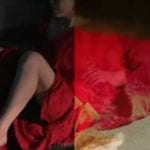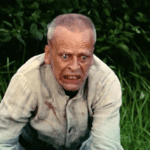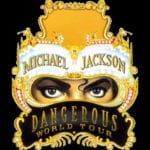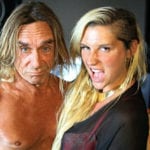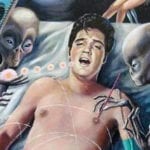 Crime
Crime  Crime
Crime  Books
Books 10 Stories Far Ahead of Their Time
 Politics
Politics 10 Surprising Expectations of U.S. Presidents after Leaving Office
 Humans
Humans Real-Life Marvels: 10 People with Incredible Abilities
 Movies and TV
Movies and TV 10 Actors Who Tried and Failed at Directing
 History
History 10 Stunning Events Caught on Film or Tape Before Cell Phones
 Crime
Crime 10 Forensic Methods Pioneered by Sherlock Holmes
 Miscellaneous
Miscellaneous 10 Things You Didn’t Know Had Dirty-Sounding Names
 Weird Stuff
Weird Stuff The Ten Most Bizarre English Aristocrats Who Ever Lived
 Facts
Facts 10 Facts about the Hidden World of Microbial Art
 Crime
Crime !0 American Politicians Who Have Served Time in Prison
 Books
Books 10 Stories Far Ahead of Their Time
 Politics
Politics 10 Surprising Expectations of U.S. Presidents after Leaving Office
Who's Behind Listverse?

Jamie Frater
Head Editor
Jamie founded Listverse due to an insatiable desire to share fascinating, obscure, and bizarre facts. He has been a guest speaker on numerous national radio and television stations and is a five time published author.
More About Us Humans
Humans Real-Life Marvels: 10 People with Incredible Abilities
 Movies and TV
Movies and TV 10 Actors Who Tried and Failed at Directing
 History
History 10 Stunning Events Caught on Film or Tape Before Cell Phones
 Crime
Crime 10 Forensic Methods Pioneered by Sherlock Holmes
 Miscellaneous
Miscellaneous 10 Things You Didn’t Know Had Dirty-Sounding Names
 Weird Stuff
Weird Stuff The Ten Most Bizarre English Aristocrats Who Ever Lived
 Facts
Facts 10 Facts about the Hidden World of Microbial Art
10 Music Genres Designed To Scare And Offend
Genre categorization is not definitive—genres are only tools to describe a loosely connected collection of songs sharing certain attributes. It’s nearly impossible to reach a complete consensus on the definition of any given music genre because bands change their styles, musicians have diverse and often overlapping musical influences, and genres themselves evolve over time.
The following controversial music genres, though, are a bit more clear-cut. Their music or lyrics glorify and promote violence, hatred, murder, racism, rage, or anti-Semitism. Who knew music could be so unpleasant?
10Powerviolence
Powerviolence, a type of hard-core punk rock, began in California in 1989. Powerviolence songs melded the shouting vocals of punk with the abrasive breakdowns and blast beat drums of metal. Frequently changing tempo, bands spastically switched from playing extremely fast to slowly and then back again to fast. Lyrics were difficult to understand over the loud, aggressive music. Because they played quick, short, raw, intense songs (some less than half a minute), powerviolence bands created a feeling of chaos with their unpredictable sound.
Although the genre emphasized noise over any real lyrical depth, powerviolence lyrics were politically militant, expressing thoughts on drugs, animal rights, the inner city, and serial killers. Because many powerviolence songs were so short, bands were prolific in their output, releasing EPs, demos, and vinyl-only recordings. By the mid- to late 1990s, the genre lost steam as bands broke up or significantly changed their sound.
9Brutal Death Metal
Although death metal already takes metal music to the extreme with its aggressive drumming, vocal screaming, and heavy guitar distortion, brutal death metal is in another stratosphere. Popular brutal death metal bands adopt such charming names as Suffocation, Cannibal Corpse, Dying Fetus, Aborted, Decapitated, and Bloodbath.
Brutal death metal sounds like evil personified. The vocals are often tuned down to achieve an extremely low, primal sound, and the sudden tempo changes evoke a feeling of chaos and fear. The drumming is complex, maintaining technical precision at an incredibly fast speed. Guitars are distorted and palm muted, serving more as a background for the drums and vocals than as the main focal point. Singers harshly push their vocals out from deep in their throats, which is difficult to listen to and perhaps the main reason that brutal death metal hurts most people’s ears.
8Rock Against Communism
Rock Against Communism, a form of punk music, arose after a white power rock concert in Leeds, England in 1978. Featuring bands with names like Skrewdriver, Skullhead, and No Remorse, the music expressed racist, anti-Semitic, and homophobic sentiments. Ian Stuart Donaldson, the lead singer of the British band Skrewdriver, led fundraising efforts for Rock Against Communism concerts across England in the 1980s. These concerts, sponsored by the white nationalist organization National Front, continued throughout the UK into the mid-1980s.
Rock Against Communism, along with its metal cousin National Socialist Black Metal, is termed hatecore by ethnomusicologists because the music encourages white supremacy, neo-Nazism, and hatred of ethnic, religious, and sexual minorities. Some songs, like “We March To Glory” by Skrewdriver, also featured militaristic themes of racial violence. In the late 1980s to early 1990s, most Rock Against Communism bands changed their sound to reflect elements of hard-core punk.
7Oi!
“Oi!” was Cockney slang that members of the British working class used as a casual greeting, similar to saying “hey, you.” Sounds innocent enough, right? Oi! music, however, was music by skinheads, for skinheads. Describing a musical movement and subculture that started in the UK in the late 1970s, Oi! was popular among poor youth in Britain.
With their song “Oi, Oi, Oi,” the London punk band Cockney Rejects inspired a music genre that featured simple punk rock instrumentation and themes of workers’ rights, rebellion against the police, and distrust of the government. Although it sometimes shared a similar audience with Rock Against Communism, Oi! focused more on fighting in the streets and allegiance to football teams than on politics and racism. Centered around an immature rebellion to any and all forms of authority, Oi! songs lyrically discussed violence, and fights often broke out between young men in the crowd at concerts.
6Crack Rock Steady
Crack rock steady, named after the drug crack cocaine, is a blend of ska, punk, reggae, and hard-core metal. Lyrics are often anti-establishment, with frequent cursing and references to drugs. In their songs, crack rock steady bands also endorse mild criminal acts like vandalism, squatting, and shoplifting.
Emerging in New York City in the mid-1990s, crack rock steady gained momentum as a distinct genre with the band Choking Victim. In their song titled “Crack Rock Steady,” Choking Victim urges listeners to kill cops, burn churches, and live above the law. Other crack rock steady bands included Leftover Crack, The Stupid Stupid Henchmen, Morning Glory, and Union Jack. These bands encouraged atheism, rebelling against the police, and smoking crack cocaine. Crack rock steady songs were not racist; instead, they advocated a vagrant lifestyle and anti-authoritarian attitude that was open to all people that wanted to adopt it, regardless of race.
5Juggalo
Juggalo refers to the subculture of fans of Insane Clown Posse and other hip-hop groups on Psychopathic Records. Violent J, one half of the duo Insane Clown Posse, coined the word during a concert in 1994 when he referred to the audience as “Juggalos.” Identified more by its image than its sound, the Juggalo music style includes fans and bands that wear scary clown face paint, communicate with gang signs, and listen to violent hip-hop. Since 2000, Psychopathic Records has sponsored The Gathering of The Juggalos, a four-day event in which groups on the label perform hard-core hip-hop and fans watch wrestling matches.
The aggression and violence in Juggalo lyrics has expanded into real life. Some juggalos have made the news with their criminal activity such as robbery, assault, selling drugs, and even murder. Although the Juggalo subculture contains nonviolent members, the FBI controversially officially classifies Juggalos as a loosely organized hybrid gang.
4Horror Punk
Inspired by horror movies and obscure science fiction films, horror punk fuses punk rock with gruesome lyrics and morbid imagery. Originating in the late 1970s with the band The Misfits, horror punk has a gothic, rockabilly aesthetic. To get a sense of horror punk, consider The Misfits’ song “Skulls,” about a serial killer bathing in the blood of decapitated corpses and peeling the skin off his victims’ bodies. He also hacks the heads off of little girls and puts them on his wall.
Horror punk songs are not usually racist or political, as they focus more on horror and murder. Like brutal death metal, the lyrics discuss violent acts, but unlike brutal death metal, horror punk can be melodic—it is not sonically grating or harsh. Fans of horror punk often dress in black, wear skeleton jewelry or accessories, enjoy science fiction movies and books, and go all-out to celebrate their favorite holiday, Halloween.
3Pagan Black Metal
Pagan black metal is heavy metal music that centers thematically on paganism, the broad term that describes the rituals and traditions of cultures before the rise of Christianity in Europe. Lyrically, pagan black metal songs may include graphic representations of death, blood loss, ritual sacrifice of animals, or anti-Christian sentiment. Some pagan black metal bands use ancient languages, primitive Viking instruments, and references to nature and mythology to further express the paganism theme.
Popular in European countries like Norway and Germany, pagan black metal is sometimes associated with neo-Nazism because the bands use ancient Scandinavian symbols, similar to the swastika, in their album artwork. In April 2008, the Berlin Institute of Fascism Research and Anti-Fascism Action accused performers at the folk/pagan metal festival Paganfest of being neo-Nazis. In response, the pagan black metal bands Moonsorrow, Skyforger, and Tyr strongly denied that their music had any ties to Nazism.
2Gabba
Gabba, not to be confused with the children’s puppet TV show Yo Gabba Gabba!, is hard-core electronic music that began in Rotterdam, the Netherlands in the late 1980s to early 1990s. Also called gabber (a slang word for “buddy” in Dutch), gabba features fast techno with distorted bass from a Roland drum machine and synthesized melodies. Because the bass drum is sped up so fast, it creates a harsh and aggressive sound. Although the vocals can be difficult to understand because they’re distorted, screamed, or altered in pitch, the lyrics in gabba music are rife with cursing and emphasize drug use and committing violent acts.
In the 1990s, the Dutch entertainment company ID&T organized parties that featured gabba music, encouraging teenagers and young adults to dance to gabba. Gabba was popular in underground raves and dance clubs in Germany, the Netherlands, and Italy. Although some neo-fascists listened to gabba in these raves, gabba on the whole does not promote racism.
1Witch House
Arising in the late 2000s, witch house is dark, atmospheric electronic music with the occult as a sonic and visual focal point. Originally termed the more controversial “rape gaze,” witch house is influenced by the TV show Twin Peaks, cult horror films from the 1970s and 1980s, and Unicode symbols (think Illuminati triangles, crosses, and pentagrams). Lyrically, witch house covers rape, murder, drugs, cutting, and self-harm, although the witch house band CREEP claims that the subject matter is meant more as a joke than literally.
Witch house music evokes feelings of horror with its focus on the supernatural, often featuring synthesizers, samples, vocals that have been altered to the point of incomprehension, and repeating, droning loops. It’s scary—imagine you’re blindfolded in a haunted house at night, and you suddenly hear a mix of ambient, experimental hip-hop and industrial goth playing all around you. You try to run away, but you can’t move your limbs. The music proceeds at a tempo as slow as molasses, and you try to open your mouth to scream . . . but no sound comes out.




